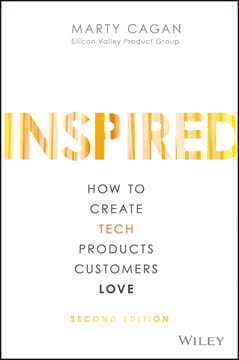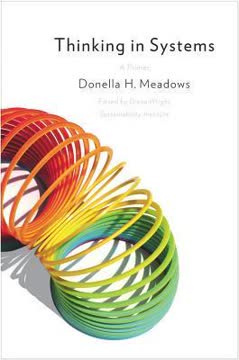Key Takeaways
1. Pricing is a Design Job, Not an Excel Job
I had a key insight that resonated: pricing is more a “design” job than an “Excel” job.
Beyond Spreadsheets. Pricing isn't just about crunching numbers in a spreadsheet; it's a strategic design process. It requires understanding customer psychology, market dynamics, and the value your product delivers. Relying solely on cost-plus pricing or competitor benchmarking misses the nuances of creating a pricing model that resonates with your target audience.
Design Thinking. Approaching pricing as a design challenge involves empathy, experimentation, and iteration. It's about understanding your customers' needs, pain points, and willingness to pay, and then crafting a pricing structure that aligns with their perception of value. This may involve creating different pricing tiers, bundling features, or offering customized solutions.
Strategic Advantage. Effective pricing can be a significant competitive advantage. It can help you attract new customers, increase revenue, and improve profitability. By focusing on design, you can create a pricing model that is both sustainable and scalable, allowing you to adapt to changing market conditions and customer needs.
2. Price Your Customer, Not Your Product
Instead of trying to price your product, you should price your customer.
Customer-Centric Approach. The fundamental shift in thinking is to move away from pricing based on the cost of your product and instead focus on the value it provides to different customer segments. This means understanding their specific needs, willingness to pay, and the jobs they are trying to accomplish with your solution.
Value Differentiation. Recognizing that not all customers are the same is crucial. Some customers may be willing to pay a premium for certain features or services, while others may be more price-sensitive. By segmenting your customer base and tailoring your pricing accordingly, you can maximize revenue and capture a larger share of the market.
Pricing Structure. This approach emphasizes creating a pricing structure that allows you to discriminate between different customers. This structure includes product packaging and pricing metrics. The goal is to build a pricing structure that will properly price all these customers.
3. Scale Economics Drive Sustainable Profitability
“Strategy” is “the plan you have to gain competitive advantage, defined as a sustainable way to keep profits above the cost of capital.”
Superior Profit Formula. To outperform competitors, a superior profit model is needed, focusing on lower customer acquisition costs (CAC), higher product value, or lower delivery costs. This requires understanding and leveraging different types of scale: economies of scale, network effects, and distribution effects.
CLTV/CAC Ratio. The core yardstick of profitability is the Customer Lifetime Value (CLTV) to Customer Acquisition Cost (CAC) ratio. This metric captures the balance between the cost of acquiring a customer and the total lifetime gross profits generated by that customer. A higher CLTV/CAC ratio indicates a more profitable and sustainable business model.
Scale Combinations. Combining different types of scale can create a powerful competitive advantage. For example, a product with network effects and viral marketing can achieve both high product value and low CAC. Understanding the dynamics of scale in your market is essential for building a sustainable and profitable business.
4. The CUPID Model: Users as Customers, Product, or Distribution
The key question the CUPID model forces you to answer is “What is the value path from user to customer?”
Understanding the Value Path. The CUPID model provides a framework for designing a product ecosystem around the three types of scale: Customers, Users, Product, Iteration, and Distribution. It forces you to consider how your users contribute to your business, whether as paying customers, as part of the product itself, or as a distribution channel.
Users as Customers. This is the most straightforward scenario, where users directly pay for the value they receive from your product. The focus is on strengthening the relationship with these customers and continuously increasing the value of your offering.
Users as Product or Distribution. In some cases, users may not be direct customers but contribute to the value of the product or help distribute it to other users. For example, a social media platform may sell user data to advertisers, or a free version of a software may drive adoption of the paid version. Understanding these dynamics is crucial for designing a sustainable business model.
5. Product Model: Fencing and Laddering
Fencing: the separation of your customers into overall different categories (e.g., train passengers vs. freight transportation).
Two-Level Approach. The product model involves two levels: the product ecosystem and packaging. The ecosystem considers how different products support each other to build more value, while packaging focuses on specific use cases and value propositions.
Fencing. Fencing involves separating customers into distinct categories to better deliver and extract value. This allows for specialized product and pricing models tailored to each segment. Effective fences are discreet, stable, fair, obvious, and valuable.
Laddering. Laddering involves structuring the product to guide customers' purchase, usage, and expansion over time. This creates a product ladder that encourages customers to upgrade to more expensive tiers as their needs evolve. The "Jobs to Be Done" theory helps identify the core problems that each package should solve.
6. Complexity is a Virtue in Pricing
The rule of thumb is that the larger the ACV, the more complexity you need.
Beyond Simplicity. While simplicity is often touted as a key principle in pricing, complexity can be a virtue when it comes to price discrimination. The larger the Annual Contract Value (ACV), the more complexity is needed to capture the full value of your product and cater to different customer segments.
Nine Building Blocks. The complexity toolbox includes nine building blocks: setup fees, ad-hoc one-offs, exit fees, flat base fees, flat add-on fees, flat non-optional fees, metric-based license fees, consumption-based metrics, and credit-based metrics. By strategically combining these elements, you can create a pricing model that is both flexible and profitable.
Strategic Tool. Complexity is a tool to price discriminate between different customers. The goal is to create a pricing structure that is easy to sell, not necessarily simple. This involves balancing the need for clarity with the ability to capture value from different customer segments.
7. Wallet Structuring: Make Everyone Pay
The rationale is simple: make everyone pay.
Understanding the Buying Committee. Enterprise software is often bought by a committee, with each member representing a different department or function. Each of these stakeholders has their own budget and priorities, and they all have the power to block the sale.
Targeting Budgets. Wallet structuring involves aligning your pricing structure with your customer's budget structure, ensuring that each stakeholder contributes to the overall cost. This can involve charging different departments for specific features or services that align with their responsibilities.
Cost-Plus and Value Pricing. Wallet structuring allows you to combine cost-plus and value pricing strategies. You can charge your primary buyer for the value they receive from your product, while also charging other departments for the costs associated with their use of the system. This approach can increase revenue and improve customer alignment.
8. The Behavioral Pricing Matrix: Relative Price Points
Prices are not high or low on an absolute basis—only in relation to something else.
Anchoring Effect. Prices are not evaluated in isolation but in relation to other reference points. The "anchoring effect" demonstrates how initial information can significantly influence willingness to pay. Understanding these psychological factors is crucial for setting effective price points.
Behavioral Pricing Matrix. The matrix maps out four basic price-anchoring scenarios based on information asymmetry and competitive pressure: cost-based, niche-based, perceived value, and fair value pricing. Each quadrant requires a different approach to pricing and communication.
Customer Sophistication. Customer sophistication is a key factor in determining the appropriate pricing strategy. Sophisticated customers are more informed and price-sensitive, while less sophisticated customers may be more influenced by perceived value. Tailoring your pricing to the level of sophistication of your target audience is essential for success.
9. Discounts Are a Profit Tool, Not a Sign of Weakness
Discounts are a powerful tool, and for that reason, they can be powerfully misused.
Strategic Tool. Discounts should be viewed as a strategic tool for maximizing profit, not as a sign of weakness or a way to compensate for poor sales skills. When used correctly, discounts can help you attract new customers, increase sales volume, and improve customer retention.
Structural vs. Sales Discounts. Structural discounts are predetermined and transparent, designed to incentivize higher volume purchases. Sales discounts are discretionary and used to close individual deals. Both types of discounts should be carefully managed and controlled.
Prioritizing Discounts. When offering sales discounts, prioritize time-limited discounts, better terms and conditions, and upselling with a permanent discount. Permanent discounts on preferred products should be a last resort. The goal is to minimize the impact on long-term revenue while still closing the sale.
10. Raise Prices Regularly to Reflect Value
You should probably raise your prices at least annually, if not quarterly.
Dynamic Pricing. SaaS products are constantly evolving, with new features and improvements being added regularly. To reflect this increasing value, prices should be raised regularly, at least annually if not quarterly. This ensures that you are capturing the full value of your product and maximizing revenue.
Contract Framework. Your contract should allow you to change prices, discounts, products, and operational terms without renegotiating the contract. This provides the flexibility to adapt to changing market conditions and customer needs. A dynamic SaaS contract framework is essential for long-term success.
Avoiding Hydra and Monolith Pitfalls. To avoid becoming a hydra (with too many add-ons) or a monolith (with under-monetized features), focus on maintaining packaging integrity and reassessing price points often. This involves creating new offerings for distinct new jobs and adding functionality to existing offerings to improve their value.
Last updated:
Review Summary
The Pricing Roadmap receives high praise from readers, with an average rating of 4.55/5. Reviewers commend its comprehensive coverage of B2B SaaS pricing, practical frameworks, and real-world examples. Many find it informative, insightful, and well-structured, appreciating its depth and applicability. Product managers and pricing professionals particularly value its actionable strategies and clear explanations. Some readers note its usefulness as a reference guide, while a few mention certain chapters being more engaging than others. Overall, it's widely recommended for anyone involved in or interested in SaaS pricing.
Similar Books









Download PDF
Download EPUB
.epub digital book format is ideal for reading ebooks on phones, tablets, and e-readers.





